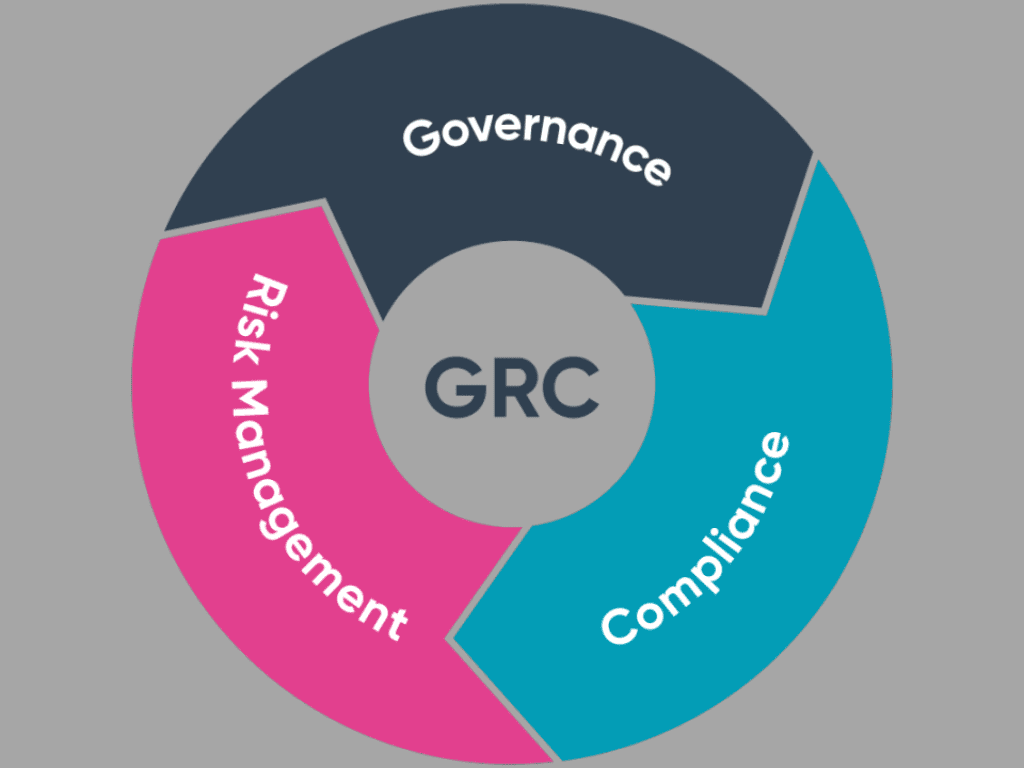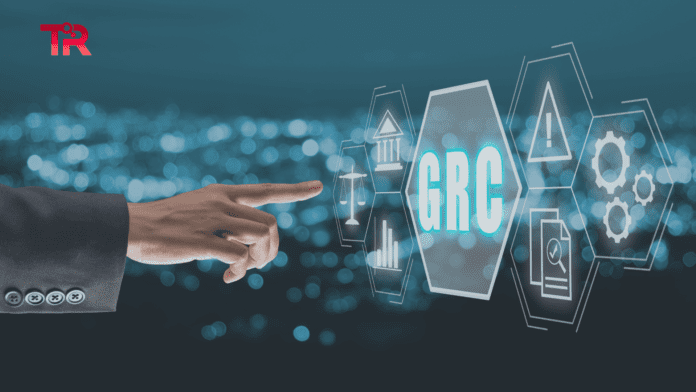Have you ever wondered how organizations stay secure, manage risks, and follow regulations? Well, that’s where GRC—Governance, Risk Management, and Compliance—comes in. In this article, we have broken down all the information about how GRC helps businesses protect their data, meet legal standards, and achieve their goals.
So, no matter if you are a cybersecurity expert or want to know about What is GRC in Cyber Security is just out of curiosity, this article will surely help you answer what, why, and how GRC is essential for any organization. So, keep on reading.
What is GRC in Cyber Security?
GRC stands for Governance, Risk Management, and Compliance. It is basically a strategy that helps organizations to align their efforts and achieve goals, manage risks, and follow regulations. It combines their governance, risk management, and compliance into a single, unified approach.
What is Cybersecurity Governance?
Cybersecurity governance is responsible for creating a framework that manages your organization’s security efforts. Therefore, its strategies include setting up policies and procedures to protect your information systems. Henceforth if you manage to get good governance and security practices, then you will surely meet your business goals in no time.
Governance is surely the key feature if you want to get a control over your security risks. It provides you with a clear structure that helps you make a well-informed decision and accountability. Thus, by defining roles and responsibilities, you can more effectively manage your security resources. Moreover, you should also regularly assess your system’s security to improve your security system and adapt the latest policies as new threats emerge.
What is Cybersecurity Risk Management?
Risk management in cybersecurity helps you identify, assess, and address potential risks in your security system before they turn into concerning issues. This proactive approach helps you prevent any security breaches and protects your data from any potential loss.
Risk management includes a thorough risk assessment of the pinpoint vulnerabilities in your system and their potential impacts. Once you identify the risks, the very next step is to develop strategies to minimize their effect on the system management. Therefore, regular monitoring and review are crucial to detect new threats and adjust strategies.

What is Cybersecurity Compliance?
Cybersecurity compliance determines how you follow the laws, regulations, and standards relevant to your industry. It ensures that your organization or company meets the legal security requirements and is capable of protecting your sensitive data from scammers. Moreover, compliance also helps you avoid legal troubles and penalties.
Henceforth, if you want to achieve compliance in your security system, you need to implement specific security regulations such as GDPR, HIPAA, or PCI-DSS. Not only this, regular audits are also necessary to ensure you’re meeting these standards. So, undoubtedly staying up-to-date with regulatory changes and ongoing training are key to maintaining compliance.
Why is GRC Important for Organizational Success?
GRC (Governance, Risk Management, and Compliance) is crucial for protecting assets and managing risks. It helps organizations identify and control security threats in time, preventing data loss. Effective GRC practices also help avoid costly breaches and downtime.
Compliance with regulations is another important aspect. GRC ensures that organizations follow laws and standards, which helps avoid legal penalties and build trust with customers and partners.
GRC enhances operational efficiency by streamlining processes and reducing redundancies. This leads to better performance and contributes to a more resilient and agile organization.
What is Governance, Risk, and Compliance Exactly?
Governance, Risk, and Compliance (GRC) are interlinked areas of focus:
- Governance involves setting up policies and frameworks for security. It aligns security practices with business goals.
- Risk Management focuses on identifying and reducing potential threats. It involves assessing risks and developing strategies to manage them.
- Compliance ensures you follow regulatory requirements. It includes implementing security measures and conducting regular audits.
How to Start a Career in Cybersecurity GRC
If you want to start your career in GRC, you need a solid educational background. Therefore, degrees in cybersecurity, IT, or related fields are preferred. Moreover, certifications like CISSP, CISM, and CRISC are also valuable.
Not only this, but you should also have strong analytical thinking and problem-solving skills to ensure a secure career in GRC. Other skills such as good communication skills, understanding regulations, and risk management are also crucial to make sure that you are capable of explaining complex concepts and information to non-technical stakeholders.
You can begin with entry-level positions such as compliance analyst or risk analyst. These roles can lead to advanced positions like GRC manager or director. Continuous learning and professional development are important for career growth.
7 Secret Ways to Implement a GRC Framework
Here is a list of 7 simple and effective ways that will surely help you implement a Governance, Risk, and Compliance framework.
- Recognize that GRC improves risk management, compliance, and operational efficiency.
- Develop a detailed plan for GRC implementation.
- Identify areas needing improvement by comparing current practices with desired standards.
- Engage stakeholders to align their expectations with GRC goals.
- Set clear policies, procedures, and roles.
- Collaborate with experts to streamline processes and access best practices.
- Create uniform policies and procedures for consistency and effective risk management.
Revision and Management of Your GRC Strategy
If you want to keep your GRC (Governance, Risk, and Compliance) strategy effective, you should keep updating it. Remember to continuously improve your policies and stay informed about new laws and standards. Therefore, you should conduct frequent assessments to find areas for improvement and keep your team trained on the latest procedures.
For this, you can use advanced technology to streamline processes and maintain good documentation for transparency. Be ready to adapt quickly to new threats and changes. This ensures your GRC strategy stays strong and meets your organization’s needs.
Conclusion
GRC—Governance, Risk Management, and Compliance—is key to keeping any organization secure and compliant. It helps align security with business goals, manage risks, and follow regulations. By using GRC, you can protect data, avoid legal issues, and improve efficiency. Whether you’re starting a career in GRC or boosting your organization’s security, these principles are essential. Stay informed, be prepared, and keep your security strategy strong.

